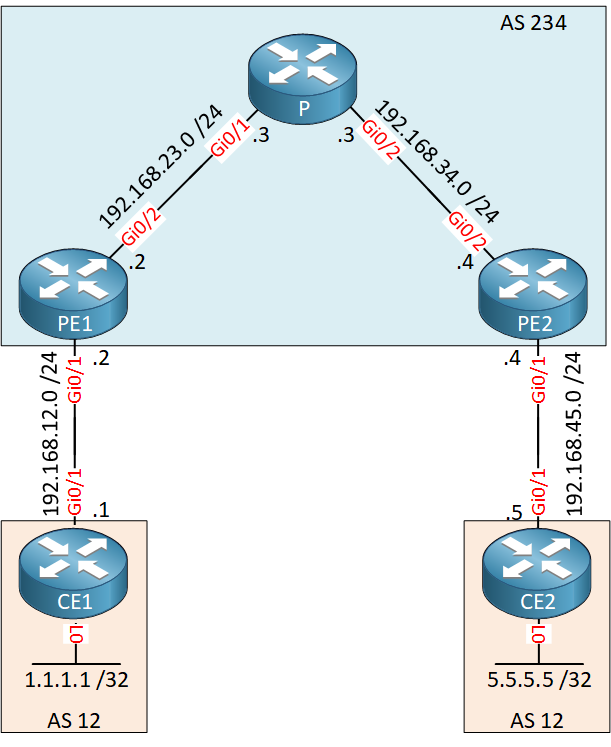BGP - Discontiguous Autonomous Systems
In BGP, a discontiguous Autonomous System (AS) refers to the situation where an AS is separated into multiple non-contiguous segments. These segments are not directly connected to each other and may be separated by networks belonging to other ASes. This scenario can occur due to various reasons such as mergers and acquisitions, strategic networking decisions, or geographic distribution. An example of a discontiguous AS can be seen below. Note that ASN 12 is discontiguous:

Managing such setups requires certain considerations when designing the network including:
- Routing Policies: Careful design of routing policies is essential to ensure consistent and efficient routing between the different segments of the discontiguous AS.
- Inter-AS Connectivity: Connectivity between the different segments of a discontiguous AS is typically established through other ASes. This requires appropriate peering or transit arrangements with the ASes that lie in between.
- BGP Configuration: The BGP configuration must account for the fact that the AS segments are not directly connected. This includes the use of BGP attributes like AS_PATH and NEXT_HOP to manage how routes are advertised and received.
- Potential Challenges: Discontiguous ASes can present challenges in terms of routing complexity, increased dependency on intermediate ASes for connectivity, and potential for suboptimal routing paths.
Although technically speaking such a setup is feasible, it is generally avoided because of the added complexity of network management. However, there are some situations in which you would purposefully design a network in this way, such as the situation illustrated in the diagram above, where an MPLS network is shown that is connecting multiple remote sites.
Links
https://networklessons.com/mpls/mpls-layer-3-vpn-bgp-allow-as-in